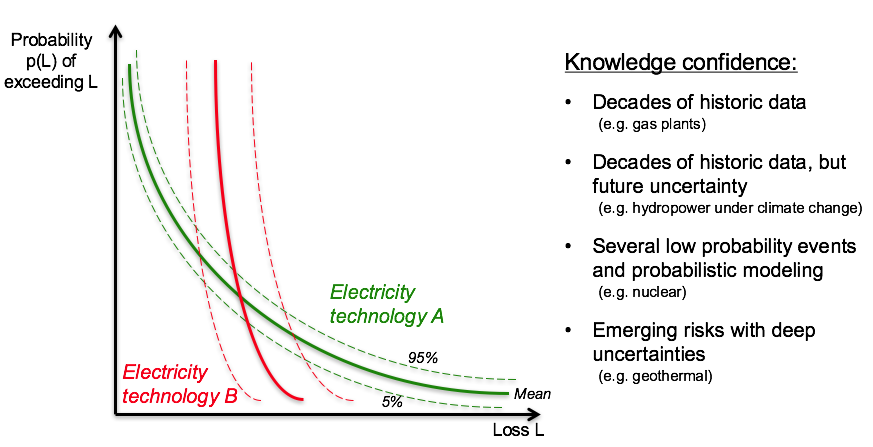Swiss electricity transition and the changing risks to human health, safety, natural and built environment (RIGOROuS project)
Switzerland has decided to phase out nuclear power to reduce the residual risk of nuclear accidents. What are the risks to human health, safety, natural and built environment posed by the Swiss electricity portfolio after the nuclear phase-out? Where will these risks be located?
All electricity generation technologies create risks to society, such as global warming, induced seismicity, or severe industrial accidents. Scientific inquiry and wider energy debate often revolve around individual technologies. As electricity demand is supplied by a technology portfolio, phasing out one technology in fact means that other technologies with own risks and locations will need to be deployed instead.
The RIGOROuS project examines such cross-technology and spatial risk tradeoffs in the Swiss electricity portfolio to 2050. Multiple risks associated with the electricity generation technologies are analyzed, adopting an open view to risk, including known and uncertain consequences, known and uncertain likelihoods, and varying knowledge confidence. The findings will be made accessible to the experts, stakeholders and the wider public by means of two interactive tools RISKMETERS (basic and spatially-explicit versions). RISKMETERS will also be used to measure expert, stakeholder and public preferences for the Swiss electricity portfolio in light of risks.
The RIGOROuS project is funded by the Swiss National Science Foundation (SNSF) Ambizione Energy grant. More information: http://www.tdlab.usys.ethz.ch/research/rigorous.html

The ESC member involved in this project is Dr. Evelina Trutnevyte. The group of Dr. Evelina Trutnevyte is located within D-USYS Transdisciplinarity Lab and focuses on energy decision making and energy systems analysis.
